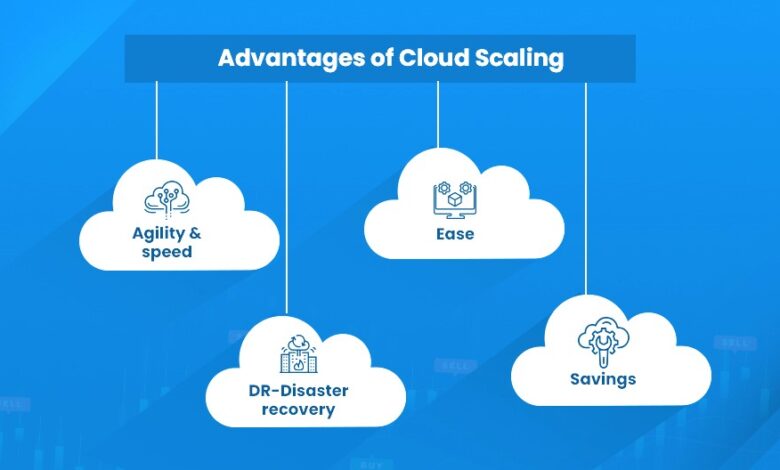Mastering Cloud Scalability: Unveiling the Key Strategies for Seamless Growth
Unlocking Cloud Scalability: A Comprehensive Guide

Cloud scalability has emerged as a game-changer in the digital landscape, revolutionizing the way businesses manage their operations. It’s not just a trend; it’s a necessity. But what exactly is cloud scalability, and why is it paramount for modern enterprises?

At its core, cloud scalability refers to the ability of a system or application to handle an increasing amount of workload by efficiently adapting and expanding resources. In simpler terms, it’s about elasticity, flexibility, and seamless growth within the cloud infrastructure.
Key Benefits of Cloud Scalability
Flexibility and Agility
In today’s dynamic business environment, agility is key. Cloud scalability offers the unparalleled advantage of flexibility. It allows businesses to swiftly adjust resources based on demand fluctuations. Whether experiencing sudden spikes or lulls in traffic, a scalable cloud infrastructure ensures optimal performance without interruptions.
Cost Optimization
Scalability isn’t just about accommodating growth; it’s also about cost-efficiency. With traditional infrastructures, over-provisioning is common to anticipate peak demands, leading to unnecessary expenses. However, cloud scalability enables precise resource allocation, reducing operational costs while maintaining top-notch performance.
Enhanced Reliability and Performance
Reliability is the cornerstone of any successful business. Scalable cloud solutions provide enhanced reliability by distributing workloads across multiple servers, ensuring redundancy and minimizing the risk of downtime. This translates to improved performance and uninterrupted service delivery for users.
Implementing Cloud Scalability Strategies
Scalable Architecture Design
A well-thought-out architecture is fundamental for achieving cloud scalability. Utilize microservices, containers, and serverless computing to create a modular and scalable infrastructure. This allows components to function independently, facilitating easier scaling without affecting the entire system.
Automated Scaling Policies
Leverage automation for scaling processes. Implement auto-scaling policies that dynamically adjust resources based on predefined conditions such as CPU utilization, incoming traffic, or response times. This proactive approach ensures optimal resource utilization while maintaining performance.
Load Balancing Techniques
Load balancing plays a pivotal role in cloud scalability. Distribute incoming traffic across multiple servers to prevent overload on any single server. Utilize load balancers that intelligently manage traffic distribution, optimizing resource utilization and enhancing overall system stability.
Challenges and Considerations
While the benefits of cloud scalability are undeniable, certain challenges and considerations must be acknowledged:
Security Concerns
As the scalability of the cloud relies on shared resources, ensuring robust security measures becomes paramount. Implement stringent access controls, encryption protocols, and regular audits to mitigate potential security threats.
Vendor Lock-in Risks
Choosing a cloud service provider demands careful consideration. Avoid vendor lock-in by assessing compatibility, portability, and the provider’s commitment to open standards. Maintain flexibility to transition between providers if necessary.
Future Trends and Innovations
The landscape of cloud scalability continues to evolve, presenting exciting prospects for the future:
Edge Computing Integration
The integration of edge computing with scalable cloud solutions is poised to revolutionize real-time data processing and reduce latency, catering to the demands of IoT devices and emerging technologies.
AI-Driven Scalability
Artificial Intelligence (AI) and machine learning algorithms are being harnessed to predict workload patterns and automate scalability decisions, optimizing resource allocation and further enhancing efficiency.
Conclusion
In essence, cloud scalability isn’t merely a technological advancement; it’s a strategic imperative for businesses aiming for sustainable growth and competitive advantage in the digital era. By embracing scalable cloud solutions and implementing robust strategies, enterprises can unlock unparalleled flexibility, efficiency, and reliability.



